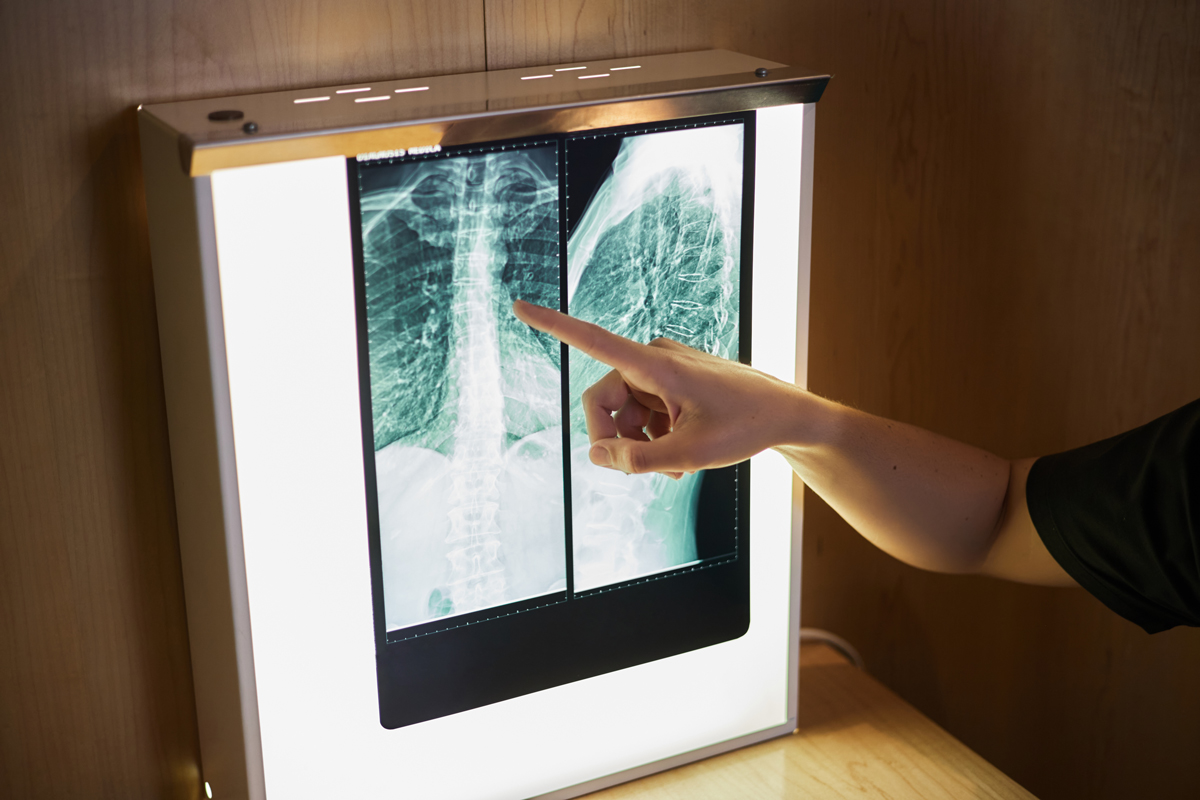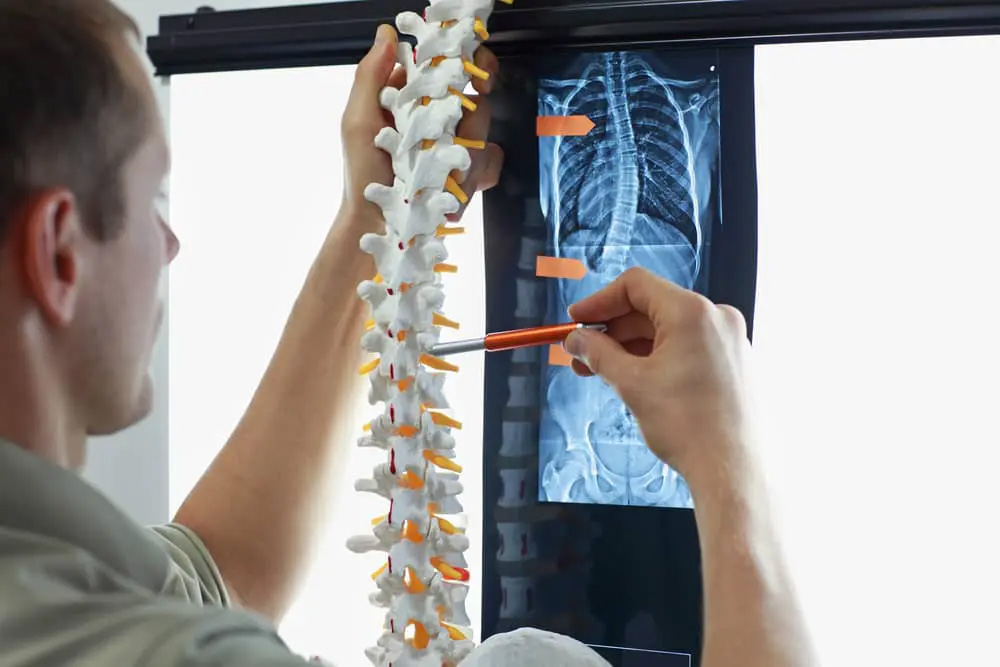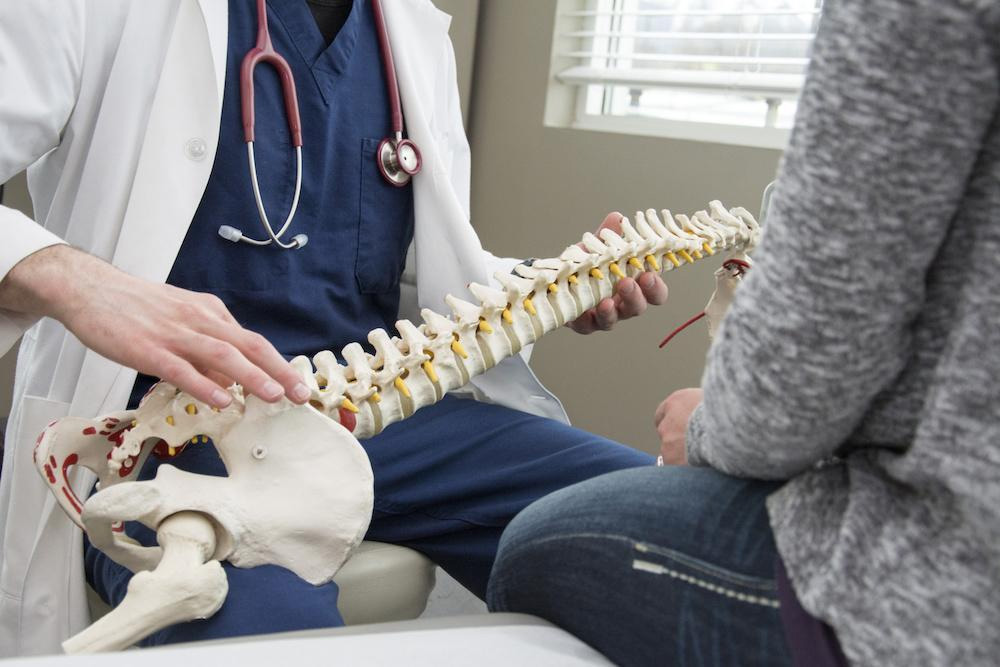
A Guide to Understand Spinal Cord Injuries (SCI)
What is a Spinal Cord Injury (SCI)?
A spinal cord injury (SCI) is damage to the spinal cord that results in a loss of function or mobility.
The spinal cord is a complex bundle of nerves that runs from the brain down through the back and connects to nerves throughout the body.
When the spinal cord is damaged, it can cause a wide range of symptoms, including paralysis, loss of sensation, and difficulty breathing.
Spinal cord injuries can occur as a result of trauma, disease, or degeneration. They can range from mild to severe and can have long-term consequences on a person’s quality of life.
Types of SCI
Spinal cord injuries can be broadly classified into two main types: complete and incomplete.
A complete spinal cord injury means that there has been a complete loss of sensory and motor function below the level of the injury.
If the injury is at the level of the neck, the person may be quadriplegic, with no movement or sensation in the arms, legs, or trunk.
An incomplete spinal cord injury means that some function remains below the level of the injury. The person may have some movement or sensation in the affected areas.
Incomplete injuries can be further classified into different types based on the location and severity of the injury.
[1]
Anterior Cord Syndrome
Anterior cord syndrome is a type of incomplete spinal cord injury that affects the nerve fibers in the front (anterior) of the spinal cord.
This type of injury usually occurs from a spinal cord stroke, but it can also result from a traumatic injury or a blood clot in the spinal cord.
The symptoms of anterior cord syndrome include a loss of movement and sensation below the level of the injury, particularly in the arms and legs, as well as bowel and bladder incontinence.
The person may also experience pain, temperature changes, and touch sensations in the affected areas.
Recovery from anterior cord syndrome can be limited, but with prompt medical intervention, some people may be able to regain some movement or feeling.
Treatment options may include rehabilitation programs, physical therapy, and medication to manage pain and other symptoms.
Central Cord Syndrome
Central cord syndrome is another type of incomplete spinal cord injury.
It is caused by damage to the center portion (central) of the spinal cord, and it usually affects the upper body more than the lower body.
Central cord syndrome often occurs in people with pre-existing spinal stenosis (narrowing of the spinal canal), but it can also result from traumatic injuries or spinal cord tumors.
The injury typically affects the arms and hands more than the legs, and the person may have difficulty with fine motor skills, such as grasping objects and buttoning clothes.
Other symptoms of central cord syndrome may include weakness or paralysis in the arms and legs, as well as bowel and bladder incontinence.
The severity of these symptoms and the prognosis for recovery depend on the extent of the injury to the spinal cord.
Treatment may include physical therapy, rehabilitation programs, and medication to manage pain and other symptoms. Some people may also benefit from surgery to address the underlying cause of the spinal cord injury.
Brown-Séquard syndrome
Brown-Séquard syndrome (BSS) is a relatively rare type of spinal cord injury that results from damage to one side (hemisphere) of the spinal cord.
The damage typically occurs due to a traumatic injury, which could be caused by penetrating trauma like a stab wound, gunshot, or due to a non-penetrating injury like a fall or a car accident.
The symptoms of Brown-Séquard syndrome depend on the location and severity of the spinal cord injury.
The side of the body opposite to the side of the injury will have a loss of motor function (muscle power), motor coordination, vibration sensation, and conscious proprioception (awareness of body position in space).
The side of the body on the same side as the injury will have a loss of pain and temperature sensation. The person with BSS may also experience bowel and bladder dysfunction.
Treatment for Brown-Séquard syndrome usually includes rehabilitation programs, physical therapy, and medication to manage pain and other symptoms.
Surgery may be necessary to address the underlying cause of the spinal cord injury.
While some people may experience a partial or complete recovery from Brown-Séquard syndrome with appropriate treatment and rehabilitation, the prognosis can vary depending on the extent of the injury.
Causes of SCI
Traumatic injuries, such as car accidents, falls, and sports injuries, are some of the most common causes of SCI.
Causes of SCI include
- Acts of violence, such as gunshot or knife wounds.
- Car accidents
- Degenerative conditions, such as arthritis or degenerative disc disease
- Diseases may affect the spinal cord, such as multiple sclerosis or spinal cord tumors
- Falls
- Industrial accidents
- Infections of the spinal cord, such as meningitis or polio can cause paralysis
- Medical or surgical injury
- Sports injuries
- Traumatic injuries
Regardless of the cause, a spinal cord injury can lead to significant loss of function, mobility, and independence.
The severity of the injury will depend on several factors, including the location of the injury and the extent of the damage to the spinal cord.
Motor vehicle accidents and catastrophic falls are the most common causes of SCI in the U.S.
What Are the Risk Factors for Spinal Injuries?
Risk factors include age (either being between the ages of 16 and 30, or after age 65 for dangerous falls), alcohol use, certain diseases, or not wearing proper gear, such as a seat belt or protective sports equipment. [1]
Men are more likely to sustain SCI than women, with men accounting for nearly 80% of all spinal cord injuries.
Certain professions or activities that involve physical labor, such as construction work or extreme sports, can increase the risk of SCI.
Those with a previous spinal cord injury are more likely to sustain another injury.
Spinal cord injuries are often unpredictable and can happen to anyone. Taking safety precautions and practicing good injury prevention is key in avoiding spinal cord injuries.
Symptoms and Complications of SCI
Motor Function Loss
One of the most common and devastating effects of a spinal cord injury (SCI) is the loss of motor function.
Motor function refers to the ability to move muscles voluntarily, and it’s controlled by the nerves that run through the spinal cord.
When the spinal cord is injured, the signals between the brain and the muscles are disrupted, leading to a loss of motor function.
The extent of motor function loss will depend on the level and severity of the injury. People with SCI may experience partial or complete paralysis (also called quadriplegia or paraplegia), as well as muscle weakness and spasticity.
The loss of motor function can have a significant impact on a person’s quality of life, making it challenging to carry out daily activities and interfering with work, hobbies, and relationships.
Motor function loss is a primary focus of treatment and rehabilitation for individuals with SCI. Physical therapy and assistive devices can help to improve muscle strength, increase range of motion, and enhance mobility, allowing people with SCI to regain some independence and improve their quality of life.
Sensory Loss
Sensory function refers to the ability to feel sensations like touch, pain, and temperature, and it’s also controlled by the nerves that run through the spinal cord.
When the spinal cord is injured, the signals between the sensory nerves and the brain are disrupted, leading to a loss of sensation in parts of the body below the level of the injury.
The extent of sensory loss will depend on the location and severity of the injury. People with SCI may experience decreased or complete loss of sensation, making it challenging to detect touch, heat, or cold.
This loss of sensation can also affect the ability to detect pressure and joint position, which can increase the risk of pressure sores and falls.
Sensory loss, like motor function loss, is a focus of treatment and rehabilitation for individuals with SCI. Physical therapy, occupational therapy, and assistive devices can help people with SCI develop compensatory strategies to improve their ability to carry out daily activities and enhance their quality of life.
Autonomic Dysreflexia
Autonomic dysreflexia is a potentially life-threatening condition that can occur in people with spinal cord injury (SCI) at or above the level of T6 (sixth thoracic vertebra).
It’s a sudden, extreme reaction of the autonomic nervous system (which controls automatic body functions) to a painful stimulus or other stimulus below the level of the injury that the body is unable to regulate.
Autonomic dysreflexia can cause a rapid increase in blood pressure, pounding headache, flushing, sweating, and other symptoms.
If left untreated, it can lead to seizures, stroke, or even death.
To prevent autonomic dysreflexia, people with SCI must be diligent about managing their bowel and bladder function, avoiding pressure sores, and managing other conditions that can trigger the condition.
Often the cause of autonomic dysreflexia is a blocked catheter tube or a urinary infection.
Prompt identification of the cause and implementation of treatment are essential to reduce the risk of serious complications of autonomic dysreflexia.
Emergency treatment options may include medication to lower blood pressure and prevent complications. It’s critical for people with SCI to be aware of the signs and symptoms of autonomic dysreflexia and seek prompt medical attention if they experience any of these symptoms.
Bowel/Bladder Control Issues
Spinal cord injury (SCI) can cause significant bowel and bladder control issues.
The nerves that control bowel and bladder function run through the spinal cord, so damage to the spinal cord can affect these functions.
Depending on the level and severity of the injury, people with SCI may experience a loss of bowel and bladder control or difficulty with voiding or emptying their bladder or bowels.
They may also experience incontinence or frequent urinary tract infections (UTIs), which can lead to serious medical complications.
Treatment options for bowel control and bladder control issues may include medications, catheterization, bowel training programs, and other interventions to manage and prevent complications.
People with SCI may also benefit from strategies to improve their quality of life, such as establishing regular bathroom routines, modifying their diet and fluid intake, and using adaptive equipment or assistive devices to facilitate independence.
Working with a healthcare professional familiar with the bowel and bladder issues of spinal cord injury can be helpful in developing a customized management plan.
Sexual Dysfunction
Sexual dysfunction is a common issue that people with spinal cord injury (SCI) may experience due to the disruption of nerve signals between the spinal cord and the genitals.
Depending on the level and severity of the injury, people with SCI may experience a range of sexual dysfunctions, including loss of libido, erectile dysfunction, difficulty achieving orgasm, and changes in sexual sensation.
Sexual dysfunction can have a significant impact on a person’s quality of life and may lead to distress, depression, and relationship problems.
Rehabilitation and management of sexual function after SCI can include medication, devices to improve blood flow to the genitals, and psychological support.
Researchers have estimated that, as of 2019, 17,730 new SCI cases occur each year and between 249,000 and 363,000 people are currently living with SCI in the United States. [2]

Diagnosing SCI
Imaging Tests
Imaging tests can help identify the location and extent of the injury and guide appropriate treatment options.
Some of the imaging tests commonly used to diagnose SCI include X-rays, computed tomography (CT) scans, and magnetic resonance imaging (MRI) scans.
X-rays can help identify fractures and dislocations of the vertebrae, while CT scans can provide more detailed images of the bones and soft tissues in the spine.
MRI is often considered the most effective imaging test for SCI, as it can provide detailed images of the spinal cord and surrounding structures, including any swelling or bleeding.
Other imaging tests, such as myelography and electrodiagnostic tests, may be used to assess nerve function in people with SCI.

Treatment Options for SCI
Surgery vs Surgery Alternatives
Surgery may be required to stabilize the spinal cord and alleviate compression or pressure on the nerves. Surgery may also be considered for people with SCI who have spinal instability or deformity that could affect their long-term function and quality of life.
Surgery can be highly effective in the right circumstances, but it may also carry risks and potential complications, including infection, bleeding, and nerve damage.
Alternatives to surgery may include conservative management, such as physical therapy, rehabilitation programs, medication, and assistive devices, to manage symptoms and improve function.
The best course of treatment for SCI will depend on several factors, including the location and severity of the injury, the individual’s overall health, and their goals for recovery.
The decision to undergo surgery for SCI should be made in consultation with a qualified spinal surgeon or specialist who can weigh the potential risks and benefits of surgery versus nonsurgical options and help guide the individual in making an informed decision based on their specific circumstances.
Rehabilitation and Physical Therapy Programs
Rehabilitation programs can help people with SCI improve their muscle strength, mobility, and independence in daily activities.
Rehabilitation programs can also help people with SCI manage their bowel and bladder function, which is often disrupted by the injury.
Education and training are vital aspects of rehabilitation programs, where patients learn how to manage their condition effectively, how to prevent complications, and how to adjust to their new lifestyle.
Physical therapy, in particular, is essential for people with SCI to develop new ways of moving and performing daily tasks.
Physical therapists provide exercises that target specific muscles and movements based on the individual’s level of injury.
They may also use assistive devices like braces, wheelchairs, and walkers to aid in movement.
Occupational therapy can help people with SCI improve their fine-motor skills, as well as their ability to perform activities of daily living, such as dressing, grooming, and feeding themselves.
Have you or a loved one suffered from a spinal cord injury due to someone else’s negligence?
Shook & Stone are compassionate and experienced spinal cord injury lawyers who understand the challenges you are facing. We have a proven track record of fighting for maximum compensation for our clients.
Our goal is to help you receive the financial support you need to cover medical expenses, lost wages, and other damages. We want to take the burden off your shoulders and ensure that justice is served.
Contact Shook & Stone today to schedule a free consultation and let us fight for your rights. Don’t suffer in silence – let us help you get the compensation you deserve.
We work on contingency fee, meaning no upfront costs. You only pay if we win. Our attorneys have over 25 years of experience and work aggressively to get you the compensation you deserve.
Sources:
[1] Alila Medical Media . (2022, September 26). Spinal Cord Injury, Animation [Video]. YouTube. Retrieved May 23, 2023, from https://www.youtube.com/watch?v=TBfsnFOdTHU&t=94s
[2] Spinal Cord Injury. (2023, January 20). National Institute of Neurological Disorders and Stroke.
https://www.ninds.nih.gov/health-information/disorders/spinal-cord-injury
[3] Spinal Cord Injury Facts & Statistics. (2019, June 12). Spinal Cord Injury Information Pages.
https://www.sci-info-pages.com/spinal-cord-injury-facts-and-statistics/
 Partly cloudy
Partly cloudy A Guide to Understanding Traumatic Brain Injuries (TBI)
A Guide to Understanding Traumatic Brain Injuries (TBI) 